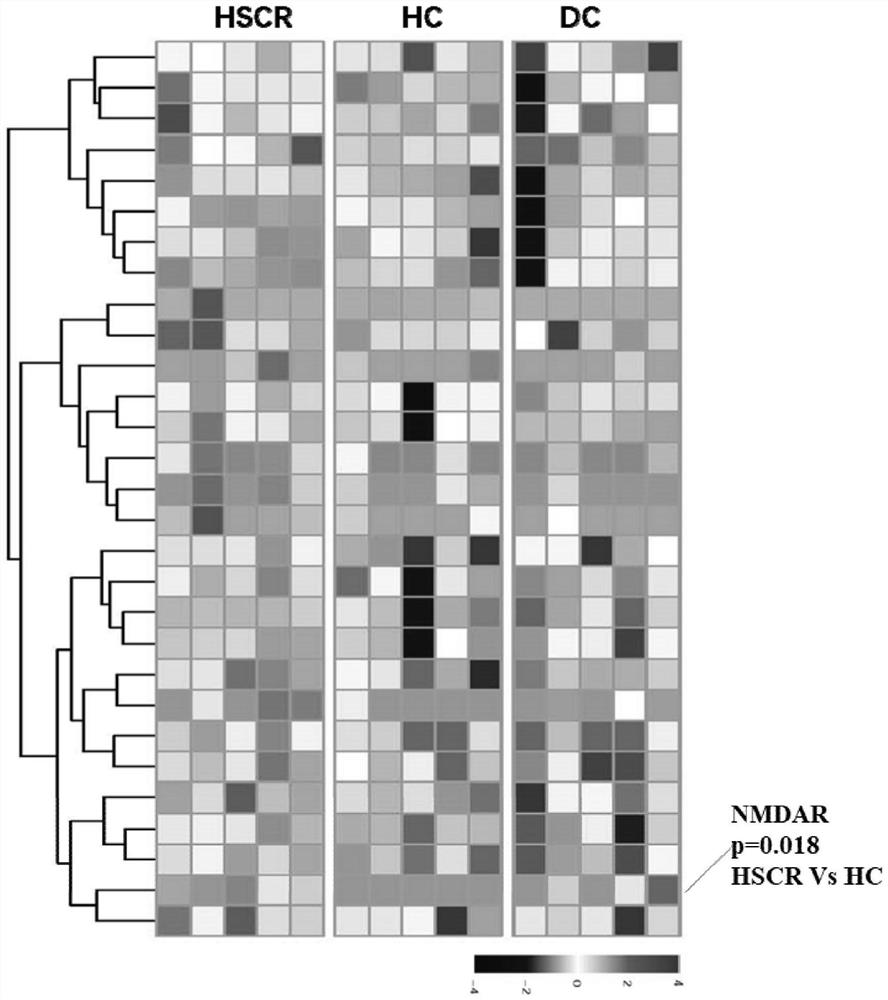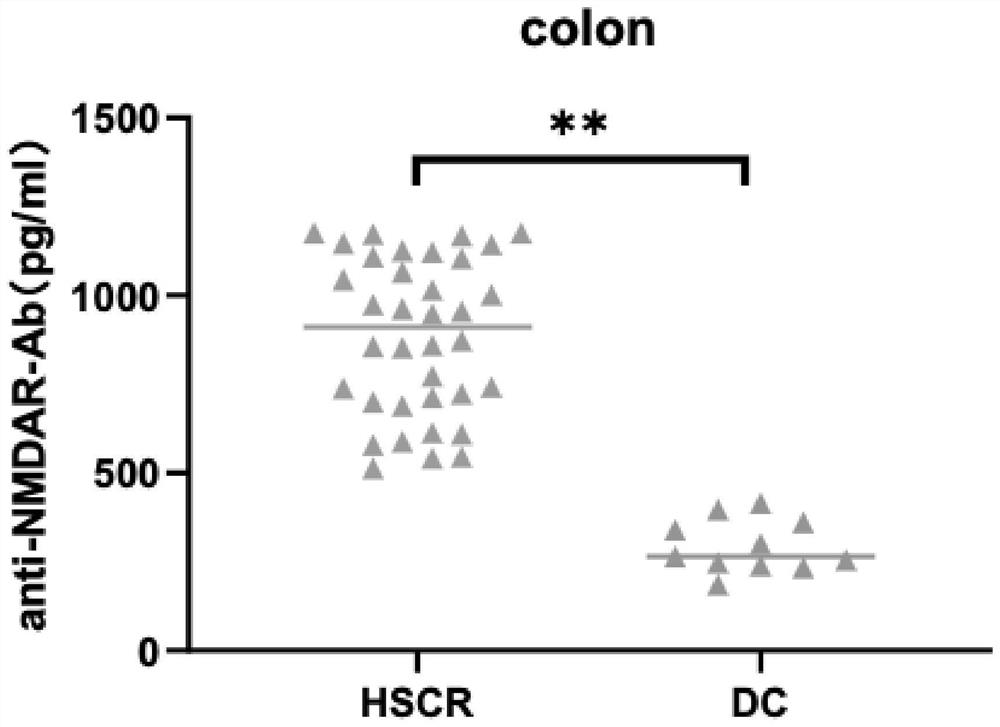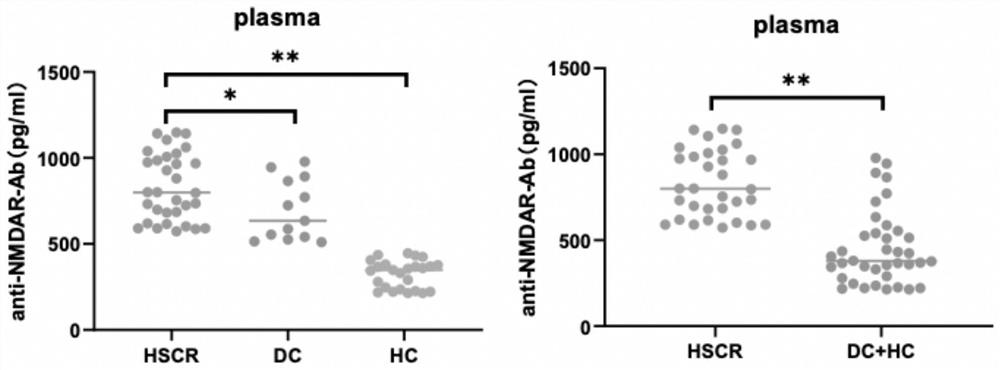Application of anti-NMDAR autoantibody as congenital megacolon diagnostic marker
A technology for Hirschsprung's disease and autoantibodies, applied in the field of biomedicine, can solve the problems of inconspicuous barium enema, influential results and high price, and achieve the effects of good sensitivity and specificity, simple operation and low cost
- Summary
- Abstract
- Description
- Claims
- Application Information
AI Technical Summary
Problems solved by technology
Method used
Image
Examples
Embodiment 1
[0079] Example 1. Collection and Grouping of Plasma and Tissue Samples
[0080] Plasma samples were divided into Hirschsprung children group (37 cases), other enteropathy control group (18 cases), healthy children group (30 cases), aged from 3 months to 3 years old, male sex 3 / 4 Male, disease and control groups were age and sex matched. All samples came from Guangzhou Women and Children's Medical Center, and the healthy children group was the remaining blood samples after physical examination of healthy children. The blood collection method is anticoagulant blood collection, centrifugation to separate plasma, and cryopreservation of samples. The colon tissue samples belonged to the Hirschsprung children group (36 cases), which were surgically resected diseased tissues. Other enteropathy control group (including 11 cases of colon tissue with anal stenosis and intestinal stricture stoma).
Embodiment 2
[0081] Example 2. Human autoimmune antigen chip screening and differentially expressed autoantibody analysis
[0082] The plasma of 5 cases of children with Hirschsprung's disease (HSCR), 5 cases of plasma from children with healthy group (HC) and 5 cases of children with other intestinal diseases (DC) were used for the screening of human neuroimmune chips. Provided by Technology Co., Ltd., including more than 100 kinds of IgG detection of neural autoimmune antibodies, the original data, after subtracting the negative control, were normalized by the RLM method, and the results were analyzed by M statistics. figure 1 The cluster analysis diagram of the differential autoantibodies is shown, from which it can be seen that the anti-N-methyl-D-aspartate receptor (NMDAR) autoantibodies were significantly higher in the plasma of children with Hirschsprung than in the control group ( p=0.018).
Embodiment 3
[0083] Example 3. Detection of autoantibodies against N-methyl-D-aspartate receptor (NMDAR) in Hirschsprung disease tissue
[0084] N-methyl-D-aspartate receptor (NMDAR) is a protein expressed specifically in nerve tissue. Autoantibodies to this protein have been reported in encephalitis, but not in peripheral enteric nervous system diseases. In order to verify that the anti-N-methyl-D-aspartate receptor (NMDAR) autoantibody is indeed derived from the enteric nerve tissue of the lesion of the patient with Hirschsprung, the intestinal tissue of the lesion of the patient with Hirschsprung was collected (36 cases), and Colonic tissues of other intestinal diseases (including 11 cases of colonic tissues of anal stricture and enterostomy) were detected by enzyme-linked immunosorbent immunoassay (ELISA) for anti-N-methyl-D-aspartate receptor (NMDAR) For the level of autoantibodies, the detection kit is human anti-N-methyl-D-aspartate receptor (NMDAR) autoantibody antibody enzyme-link...
PUM
 Login to View More
Login to View More Abstract
Description
Claims
Application Information
 Login to View More
Login to View More - R&D
- Intellectual Property
- Life Sciences
- Materials
- Tech Scout
- Unparalleled Data Quality
- Higher Quality Content
- 60% Fewer Hallucinations
Browse by: Latest US Patents, China's latest patents, Technical Efficacy Thesaurus, Application Domain, Technology Topic, Popular Technical Reports.
© 2025 PatSnap. All rights reserved.Legal|Privacy policy|Modern Slavery Act Transparency Statement|Sitemap|About US| Contact US: help@patsnap.com



